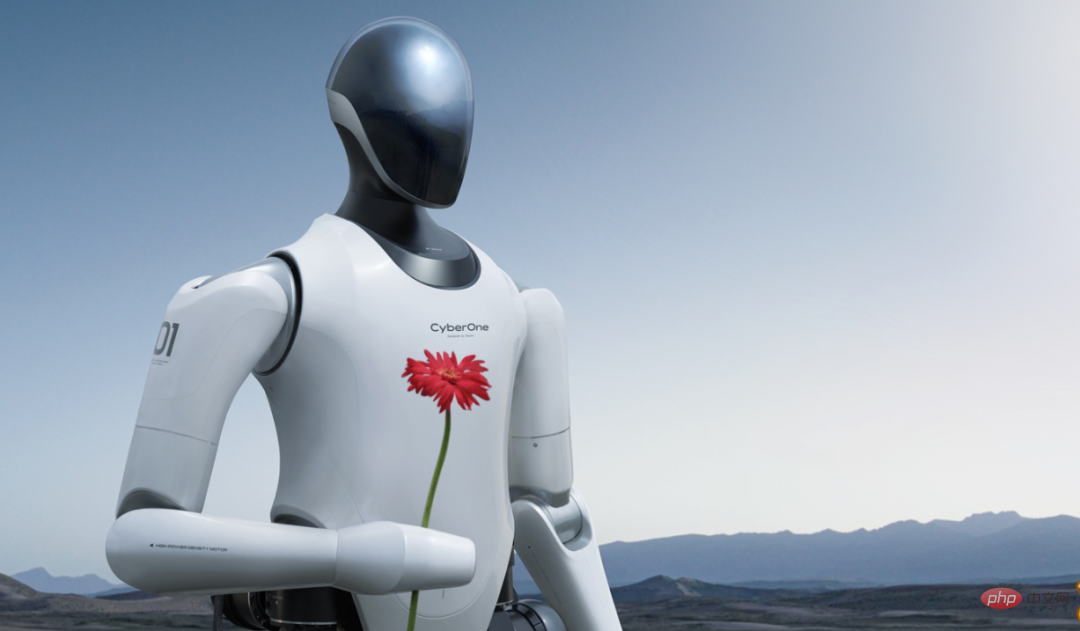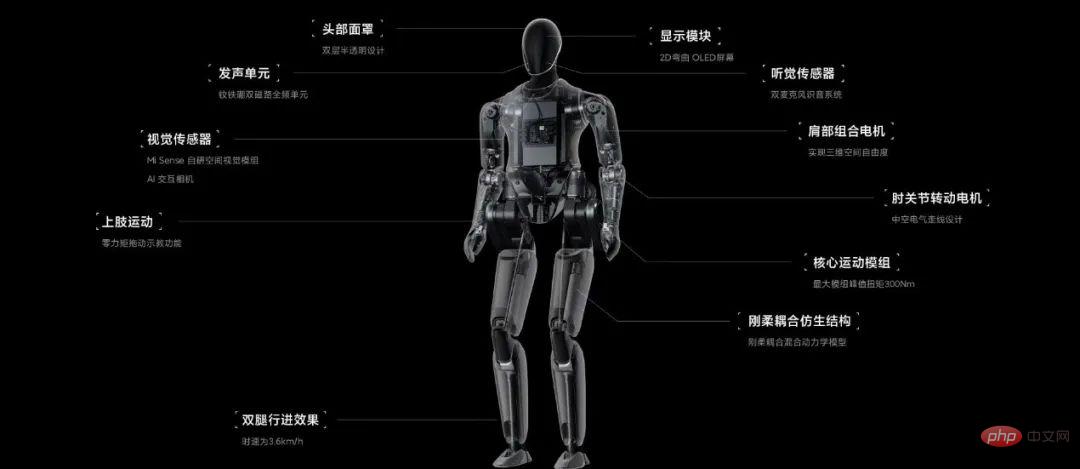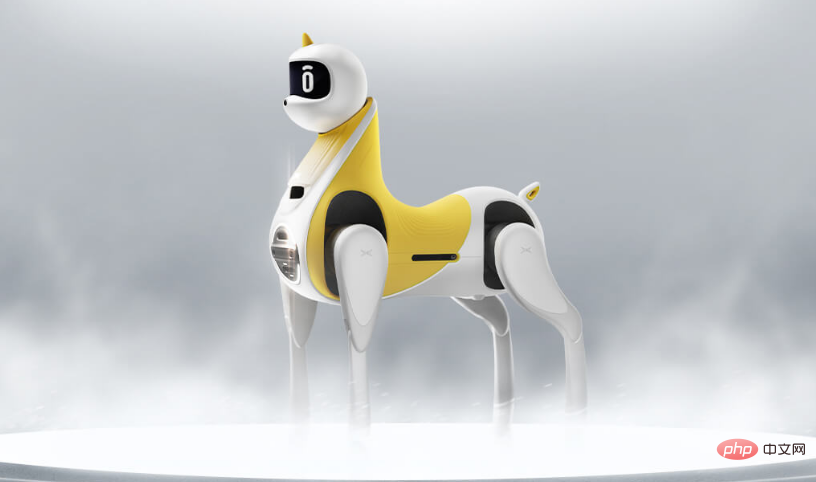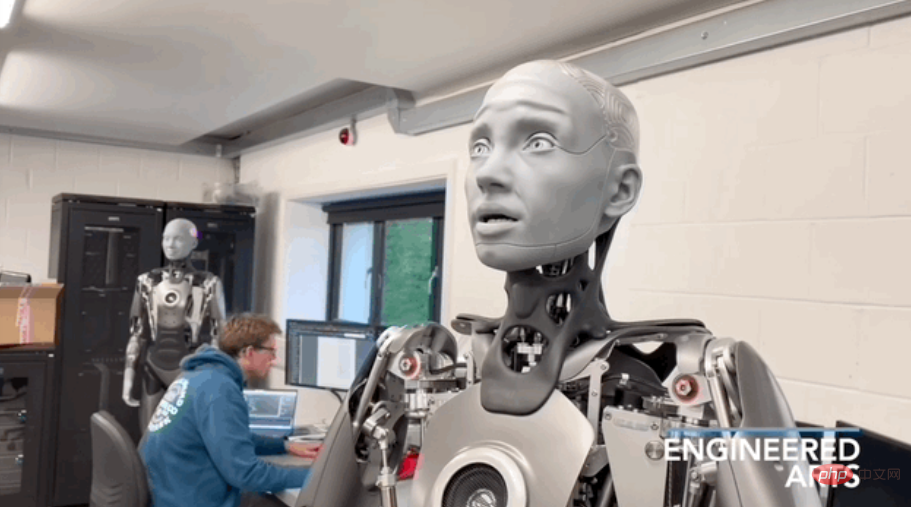Can Musk's 'Optimus Prime” be worth buying?

Written | Ink
Review School | Qianshan
#In August, the humanoid robot was "a little busy".
Musk had already used Twitter to "build momentum" for Optimus ("Optimus Prime"), which will be released in September, once again raising the expectations of netizens; Lei Jun "preempted it" "One step", launched CyberOne ("Iron Big") at the Xiaomi conference, and interacted with it, making keywords such as humanoid robots and "Lei Jun talks about the trough period" the most popular words in the WeChat circle of friends that night; at the World Robot Conference Humanoid robots either sing or perform, but they "fight" their way through a crowd of "Robots" with various styles and functions, causing the audience to stop and watch, and frequently making news headlines...
The entry of the big guys has ignited people's enthusiasm for humanoid robots. Statements such as "Humanoid robots have arrived" and "Trillion-level blue ocean market for humanoid robots" are emerging one after another, and discussions are endless.
Seeing this, one can’t help but wonder: Are humanoid robots really going to enter human life? Why do humans need humanoid robots? What kind of humanoid robot is needed?
In the novel "Klara and the Sun", Kazuo Ishiguro created an image of Clara, positioned as a solar-powered artificial intelligence robot (AF) that accompanies the growth of children. "She is able to accept and integrate everything she sees around her." She loves to observe and learn, has mature understanding, and can even "think independently", and keeps her word - because she has an appointment with Josie, she refuses others The children's show of kindness, persistently waiting for Josie's arrival - "We made an appointment."
She possesses all the beautiful qualities of human beings, even those that humans do not possess. ……
There is no standard answer to how good a humanoid robot must be before it can become a human being. But if Clara is used as a standard scale, based on the current development level of humanoid robots, how long will it take before humans meet "Clara"?
Humanoid robots, a new trend?
Humanoid robots are not a new topic, but Musk has "indispensable credit" for bringing them from the ranks of "black technology" to the track. Founding Tesla brought cars into the electric era in one fell swoop; launching SpaceX into space and starting a new journey of commercialization of the aerospace industry...
There is no doubt that Musk is good at creating topics and even topics. person, and when he set his sights on the humanoid robot, Capital's eyes also turned around.
On August 19, 2021, Musk proposed to launch a humanoid robot-Optimus ("Optimus Prime") at the first Tesla Artificial Intelligence Day, aiming to engage in Highly repetitive, boring and dangerous work. He also threatened that “robots will enter the home in the future.”

Tesla’s concept drawing of the humanoid robot Optimus (picture source: Internet)
As soon as the sound came out, there was an uproar, and technology enthusiasts and media discussed it hotly. At the capital level, the stock price of humanoid robots has been rising, and it has even "ignited" the development of upstream and downstream industry chain companies.
In April this year, Musk emphasized again that Optimus is Tesla’s most important product development project in 2022, even more than cars, and will be “moderately mass-produced” in 2023. .
Therefore, when Musk not long ago warmed up that the Optimus Prime prototype would be released at the second Tesla Artificial Intelligence Day on September 30, netizens had already We are gearing up and waiting eagerly to see how far Optimus Prime can go so that Musk can "boldly" say that it will be moderately mass-produced?
But unexpectedly, Tesla’s “Optimus Prime” has not yet arrived, but Xiaomi’s Cyber One, also known as “Iron Big”, has arrived.

##Xiaomi humanoid robot Cyber One (Photo source: Xiaomi official website)
On August 12, at the Xiaomi press conference, the excitement of the press conference reached its peak when Cyber One "held" a flower in hand, slowly walked towards Lei Jun, and interacted with him. Because before this, Xiaomi did not seem to have disclosed to the outside world its idea of "building" a humanoid robot. Cyber One is Xiaomi's first full-size humanoid robot. It is 177 cm tall and weighs 52 kg, conforming to the standard image of an adult human.
Lei Jun said that Cyber One was fully self-developed by Xiaomi Robotics Laboratory. In addition to achieving balanced bipedal movements, it also has four major technologies: strong limbs and a power peak torque of 300Nm. In addition to abilities, it can also perceive human emotions and perform three-dimensional virtual reconstruction of the real world.

## Performance introduction of CyberOne (Picture source: Xiaomi official website)
In addition, Lei Jun also said that many technologies from the group's autonomous driving department are also used in CyberOne, forming the "brain" of the bionic robot.
Speaking of this, I can’t help but think that Tesla’s Optimus Prime seems to be taking this route. Musk has said that Optimus Prime will reuse Tesla's technology in the field of autonomous driving and is expected to adopt Tesla FSD's computing modules and solutions. “If you want to solve the problem of autonomous driving, you need to solve the problem of real-world artificial intelligence first.” From this perspective, when Tesla builds humanoid robots, it seems that it is not just about robots. The larger layout seems to be inextricably linked to cars.
# When car companies create people, do they want to build cars or people?
#With the continuous advancement of technology, autonomous driving will become the ultimate goal of vehicle development, and it is becoming people's consensus.
In August 2021, at the Baidu World Conference 2021, Robin Li proposed the concept of "car robots", saying that the direction of future car evolution is to evolve in the direction of car robots. Let the boundaries between cars and robots begin to blend. It is no longer new for car companies to start "creating people." Needless to say, Tesla, although Xiaomi is not a car company, has also made clear its car-making plans and has formed a team of more than 500 people to focus on polishing autonomous driving, aiming to enter the industry's first camp by 2024.
In addition, Xpeng, one of the new car-making forces "Wei Xiaoli", launched the four-legged robot horse "Little White Dragon" in September last year, equipped with all the Xpeng Motors Zhen's self-developed intelligent driving technology has a "visual lidar" perception system and can move autonomously. Moreover, in July this year, Xpeng Motors said that its ecological enterprise "Xpeng Pengxing" received over US$100 million in Series A financing led by IDG Capital, with participation from shareholders such as Xpeng Motors. Officials stated that this was the first round of financing in the past two years. China’s largest single financing round for bionic robots.
Li Xiaopeng even said, "In the future, smart car manufacturers will also be smart robot manufacturers. I believe that smart cars and smart robots will produce a 1 1>2 effect." If people earlier thought that Xpeng's "creating people" was just like building flying cars, it was just a "side job" or a gimmick, then this operation seems to confirm that Xpeng is playing a bigger game.

##Xiaopeng Pengxing Robot Horse (Photo source: Xiaopeng Pengxing official website)
In fact, from the underlying technical level, intelligent robots and autonomous driving are connected in many aspects. For intelligent robots, whether they are sweeping robots, shopping guide robots in ToC scenarios, or warehousing and logistics robots AMR, AGV, etc. in ToB scenarios, the geographical reconstruction, path planning, navigation, visual sensing, and Algorithms and other aspects are no different from the issues involved in autonomous driving of cars. However, autonomous driving of cars is on the road, and the scene is more complex. It has higher requirements for technology and safety, is more difficult, and has a longer cycle.Therefore, choosing intelligent robots that are less difficult than autonomous driving and easier to generate products as the "first team" in the long battle seems to have become the priority of more car companies. It can not only carry out original data accumulation and technology iteration, but also promote its own autonomous driving brand. It can be described as "killing two birds with one stone".
Therefore, in the eyes of many people in the industry, Xiaomi’s humanoid robot has more of a “brand show” component.
Perhaps in this excitement, "people" are not the focus, but looking back on its development history, you will find that humanoid robots are still moving towards humans step by step. Humanity’s nearly century-old dream of humanoid robots Regarding humanoid robots, perhaps the public is more familiar with the unlovable "Edward Scissorhands", or the image of a robot with awakening consciousness and wanting to kill in "Westworld", etc. But in fact, these are already relatively "formed" images of humanoid robots. Just like many technological products in reality can find their prototypes in early science fiction works, humanoid robots are no exception. The original meaning of the word Android is "humanoid robot". In 1886, French writer Villiers de Lille-Adam described an artificial female robot in his novel "The Eve of the Future", which opened up a more modern definition of humanoid robots. At that time, it was still more than forty years before the advent of a truly “physical” humanoid robot. In 1927, the American Westinghouse Company manufactured the world’s first humanoid robot, Televox, and exhibited it at the New York World’s Fair. It did not have the function of walking, but it could Lift the receiver to "answer the call". In 1933, Westinghouse invented another humanoid robot, Elektro, with a torso, arms and legs, made of complex and diverse materials, including aluminum, iron power cords, and coffee pots wait. In the next forty years, R&D teams in various countries continued to work hard to develop more powerful humanoid robots, but the results were not very satisfactory. Until 1973, Japan's Waseda University developed the world's first life-size humanoid robot, WABOT-1, which had two robotic arms and two robotic legs. Thanks to the body control system, visual system, and dialogue system, simple body control and dialogue can be performed. Since then, the humanoid robots developed by some companies have begun to evolve in a more "humanized" direction. In 1986, the Japanese Honda Company began to develop humanoid robots. From 1986 to 1993, the E0-E6 series of bipedal robots were launched successively; in 1993, the humanoid simulation robot P1 was born, which can simulate human actions such as opening and closing doors and moving things. In the next few years, P2 and P3 came out one after another, and the height also evolved in the direction of humans. In October 2000, the simulation robot P4, namely ASIMO (Asimov), was launched. It is one meter tall, has the shape of an astronaut, and can walk upright on both feet. After iterations and upgrades, the final version of ASIMO already has a walking method similar to that of humans. It can run, walk backwards, jump, and follow humans at a speed of nearly 9 kilometers per hour. It can be said to be an important milestone in the history of robots. Boston Dynamics, an American company famous for its four-legged “robot dogs”, is also continuing to develop humanoid robots. The humanoid robot Atlas was launched as early as 2009, but it did not have basic walking capabilities until 2013. After several iterations, according to the video on the official website, Atlas is now not only able to climb steps, do backflips, etc., but has also learned skills such as running, tumbling, handstands, dancing, and even "parkour". Some even claim that Atlas has learned to autonomously Planning the path... In China, before Xiaomi, there were also some humanoid robots. For example, UBTECH continues to upgrade its humanoid robot WalkerX, trying to make "humanoid service robots finally enter the home." There is also Dada Robot, which has put forward the slogan of building a robot nanny by 2025. "The general direction is to be a humanoid nanny. We hope that humanoid robots will enter the home and handle the most basic household chores that people have to do, such as cleaning, cooking, etc., or even go a step further and help take care of the elderly. But even if the humanoid robot has "moved freely", Boston Dynamics does not dare to "make false claims" to put the humanoid robot on the market. The essence is that humanoid robots are extremely expensive and time-consuming, but have a lot of gains. It is a small field, and if you want to be a "friend of mankind", it is full of thorns. Becoming a friend of mankind has a long and difficult road Robots are a constant-heat track. From the birth of the first robot in the world to now, a period of time has passed, and the robot track is getting wider and wider. Forecast data from consulting firm Statista shows that the global industrial robot market size is expected to reach 625.815 billion yuan in 2022 and 1.115071 billion yuan in 2028, with an average annual compound growth rate of 10.73%; and the global service robot market in 2022 The market size is 202.736 billion yuan and is expected to reach 705.471 billion yuan by 2028, with an average annual compound growth rate of 23.10%. However, compared with today's more mature industrial robots and conventional service robots, humanoid robots still have many difficulties that have not been overcome. First of all, in terms of structural design, hardware composition, control algorithm, core performance requirements and component selection, the number of joints of ordinary industrial robots is between 2 and 10, while the number of joints of humanoid robots is expected to be more than 40. A higher number of joints means more flexibility. The Cyber One launched by Xiaomi this time has 19 joints, while Tesla’s “Optimus Prime” may have 40 joints, which also makes everyone I want to see its true appearance in Lushan as soon as possible. Secondly, existing humanoid robots cannot achieve good implementation in terms of "perception-cognition-decision-execution". Compared with the laboratory, whether it is at home, school, shopping malls, etc., the actual situation is much more complicated. During walking, how to effectively identify obstacles and quickly plan paths, coordinate one's own behavior, etc., is a big challenge. test. For a humanoid robot whose height and weight are close to those of an adult, once it falls, how to pick it up is a challenging task. There is also the aspect of thinking. Industrial robots and service robots seem to be able to assist humans in completing tedious and complex tasks. Why do we need humanoid robots? Perhaps humanoid robots can be more "warm" in the process of accompanying humans. This "temperature" is not only reflected in appearance, but also internally. TA can have good logical thinking ability, stable emotions and moods like humans, and even "beyond humans", avoiding human selfishness and deceptive genes, and being purely kind and Altruistic. But for now, even if AI technology becomes more and more mature, if we want to truly be like what is described in "Clara and the Sun", humans can choose their favorite "in the window" Clara”, I’m afraid it can’t be done overnight. Or, even if technology can achieve this, do humans really dare to give robots this "soul"? Last year, British technology company Engineered Arts released a video of its humanoid robot Ameca. In the video, in the silence, Ameca, who was "sleeping", moved his shoulder blades, then opened his eyes as if awakening from a dream, and looked at the world in astonishment. The "Awakening" of the humanoid robot Ameca (Picture source: Internet) Netizens expressed fear and horror after watching it, "Did this open Pandora's blind box?"... Humans are always like this, and their feelings towards robots have always been complicated. They want to enjoy the sense of superiority as "creators", but are afraid that they will "awaken" and become monsters that endanger their own interests. Of course, at the moment, it may be too early to talk about the "moral boundaries" of robots. After all, the most realistic question at the moment is whether mass production of humanoid robots can be achieved. If humanoid robots can only be "human-like" in appearance but cannot find a suitable commercial landing scenario, if things go on like this, they will only become funny "mascots" at exhibitions and "mascots" for making money at corporate new product launches. "Celebrity brand", how can we talk about the "awakening crisis" of humanoid robots? At this moment, I am curious whether the "Optimus Prime" that Musk is about to release will be refreshing? Reference link: https://baijiahao.baidu.com/s?id= 1741946463052192408 ##https://app.myzaker.com/news/article.php?pk=6305e12cb15ec06df2014eb4 http://www.cww.net.cn/article?id=496329 https://www.tmtpost.com /baidu/6230233.html https://baijiahao.baidu.com/s?id=1728829297022474436
The above is the detailed content of Can Musk's 'Optimus Prime” be worth buying?. For more information, please follow other related articles on the PHP Chinese website!

Hot AI Tools

Undresser.AI Undress
AI-powered app for creating realistic nude photos

AI Clothes Remover
Online AI tool for removing clothes from photos.

Undress AI Tool
Undress images for free

Clothoff.io
AI clothes remover

AI Hentai Generator
Generate AI Hentai for free.

Hot Article

Hot Tools

Notepad++7.3.1
Easy-to-use and free code editor

SublimeText3 Chinese version
Chinese version, very easy to use

Zend Studio 13.0.1
Powerful PHP integrated development environment

Dreamweaver CS6
Visual web development tools

SublimeText3 Mac version
God-level code editing software (SublimeText3)

Hot Topics
 1378
1378
 52
52
 Bytedance Cutting launches SVIP super membership: 499 yuan for continuous annual subscription, providing a variety of AI functions
Jun 28, 2024 am 03:51 AM
Bytedance Cutting launches SVIP super membership: 499 yuan for continuous annual subscription, providing a variety of AI functions
Jun 28, 2024 am 03:51 AM
This site reported on June 27 that Jianying is a video editing software developed by FaceMeng Technology, a subsidiary of ByteDance. It relies on the Douyin platform and basically produces short video content for users of the platform. It is compatible with iOS, Android, and Windows. , MacOS and other operating systems. Jianying officially announced the upgrade of its membership system and launched a new SVIP, which includes a variety of AI black technologies, such as intelligent translation, intelligent highlighting, intelligent packaging, digital human synthesis, etc. In terms of price, the monthly fee for clipping SVIP is 79 yuan, the annual fee is 599 yuan (note on this site: equivalent to 49.9 yuan per month), the continuous monthly subscription is 59 yuan per month, and the continuous annual subscription is 499 yuan per year (equivalent to 41.6 yuan per month) . In addition, the cut official also stated that in order to improve the user experience, those who have subscribed to the original VIP
 Context-augmented AI coding assistant using Rag and Sem-Rag
Jun 10, 2024 am 11:08 AM
Context-augmented AI coding assistant using Rag and Sem-Rag
Jun 10, 2024 am 11:08 AM
Improve developer productivity, efficiency, and accuracy by incorporating retrieval-enhanced generation and semantic memory into AI coding assistants. Translated from EnhancingAICodingAssistantswithContextUsingRAGandSEM-RAG, author JanakiramMSV. While basic AI programming assistants are naturally helpful, they often fail to provide the most relevant and correct code suggestions because they rely on a general understanding of the software language and the most common patterns of writing software. The code generated by these coding assistants is suitable for solving the problems they are responsible for solving, but often does not conform to the coding standards, conventions and styles of the individual teams. This often results in suggestions that need to be modified or refined in order for the code to be accepted into the application
 Can fine-tuning really allow LLM to learn new things: introducing new knowledge may make the model produce more hallucinations
Jun 11, 2024 pm 03:57 PM
Can fine-tuning really allow LLM to learn new things: introducing new knowledge may make the model produce more hallucinations
Jun 11, 2024 pm 03:57 PM
Large Language Models (LLMs) are trained on huge text databases, where they acquire large amounts of real-world knowledge. This knowledge is embedded into their parameters and can then be used when needed. The knowledge of these models is "reified" at the end of training. At the end of pre-training, the model actually stops learning. Align or fine-tune the model to learn how to leverage this knowledge and respond more naturally to user questions. But sometimes model knowledge is not enough, and although the model can access external content through RAG, it is considered beneficial to adapt the model to new domains through fine-tuning. This fine-tuning is performed using input from human annotators or other LLM creations, where the model encounters additional real-world knowledge and integrates it
 Seven Cool GenAI & LLM Technical Interview Questions
Jun 07, 2024 am 10:06 AM
Seven Cool GenAI & LLM Technical Interview Questions
Jun 07, 2024 am 10:06 AM
To learn more about AIGC, please visit: 51CTOAI.x Community https://www.51cto.com/aigc/Translator|Jingyan Reviewer|Chonglou is different from the traditional question bank that can be seen everywhere on the Internet. These questions It requires thinking outside the box. Large Language Models (LLMs) are increasingly important in the fields of data science, generative artificial intelligence (GenAI), and artificial intelligence. These complex algorithms enhance human skills and drive efficiency and innovation in many industries, becoming the key for companies to remain competitive. LLM has a wide range of applications. It can be used in fields such as natural language processing, text generation, speech recognition and recommendation systems. By learning from large amounts of data, LLM is able to generate text
 The full-size universal humanoid robot Qinglong debuts at WAIC, accelerating the entry into the era of embodied intelligence
Jul 11, 2024 pm 02:03 PM
The full-size universal humanoid robot Qinglong debuts at WAIC, accelerating the entry into the era of embodied intelligence
Jul 11, 2024 pm 02:03 PM
On the afternoon of July 4, under the guidance of the World Artificial Intelligence Conference Organizing Committee Office, hosted by the World Artificial Intelligence Conference Organizing Committee Office, and hosted by the National and Local Humanoid Robot Innovation Center and the China Institute of Electronics, this site, "Robotics Technology and Applications" The 2024 WAIC World Artificial Intelligence Conference Humanoid Robot and Embodied Intelligence Development Forum co-organized by the magazine will be held at the Shanghai World Expo Exhibition and Convention Center on the afternoon of July 4. This forum invited 12 domestic and foreign scholars, business representatives and developer representatives in the field of humanoid robots and embodied intelligence to give keynote reports, technology sharing and roundtable discussions, and released innovative results of humanoid robots. The forum attracted more than 200 professional audiences in the field of humanoid robots and embodied intelligence, and they were watched online through multiple live broadcast platforms.
 Using Apple Vision Pro to control robots from a distance, NVIDIA: It's not difficult to 'integrate man and machine”
Aug 01, 2024 am 03:16 AM
Using Apple Vision Pro to control robots from a distance, NVIDIA: It's not difficult to 'integrate man and machine”
Aug 01, 2024 am 03:16 AM
Huang Renxun said: "The next wave of AI is robots, and one of the most exciting developments is humanoid robots." Today, ProjectGR00T has taken another important step. Yesterday, NVIDIA founder Huang Renxun talked about its universal basic model of humanoid robot "ProjectGR00T" in his SIGGRAPH2024 Keynote speech. The model receives a series of updates in terms of functionality. Zhu Yuke, an assistant professor at the University of Texas at Austin and a senior research scientist at NVIDIA, tweeted, demonstrating in the video how NVIDIA integrates the RoboCasa and MimicGen systems, the large-scale simulation training framework for general household robots, into the NVIDIA Omniverse platform and Isaac machine
 To provide a new scientific and complex question answering benchmark and evaluation system for large models, UNSW, Argonne, University of Chicago and other institutions jointly launched the SciQAG framework
Jul 25, 2024 am 06:42 AM
To provide a new scientific and complex question answering benchmark and evaluation system for large models, UNSW, Argonne, University of Chicago and other institutions jointly launched the SciQAG framework
Jul 25, 2024 am 06:42 AM
Editor |ScienceAI Question Answering (QA) data set plays a vital role in promoting natural language processing (NLP) research. High-quality QA data sets can not only be used to fine-tune models, but also effectively evaluate the capabilities of large language models (LLM), especially the ability to understand and reason about scientific knowledge. Although there are currently many scientific QA data sets covering medicine, chemistry, biology and other fields, these data sets still have some shortcomings. First, the data form is relatively simple, most of which are multiple-choice questions. They are easy to evaluate, but limit the model's answer selection range and cannot fully test the model's ability to answer scientific questions. In contrast, open-ended Q&A
 SOTA performance, Xiamen multi-modal protein-ligand affinity prediction AI method, combines molecular surface information for the first time
Jul 17, 2024 pm 06:37 PM
SOTA performance, Xiamen multi-modal protein-ligand affinity prediction AI method, combines molecular surface information for the first time
Jul 17, 2024 pm 06:37 PM
Editor | KX In the field of drug research and development, accurately and effectively predicting the binding affinity of proteins and ligands is crucial for drug screening and optimization. However, current studies do not take into account the important role of molecular surface information in protein-ligand interactions. Based on this, researchers from Xiamen University proposed a novel multi-modal feature extraction (MFE) framework, which for the first time combines information on protein surface, 3D structure and sequence, and uses a cross-attention mechanism to compare different modalities. feature alignment. Experimental results demonstrate that this method achieves state-of-the-art performance in predicting protein-ligand binding affinities. Furthermore, ablation studies demonstrate the effectiveness and necessity of protein surface information and multimodal feature alignment within this framework. Related research begins with "S




